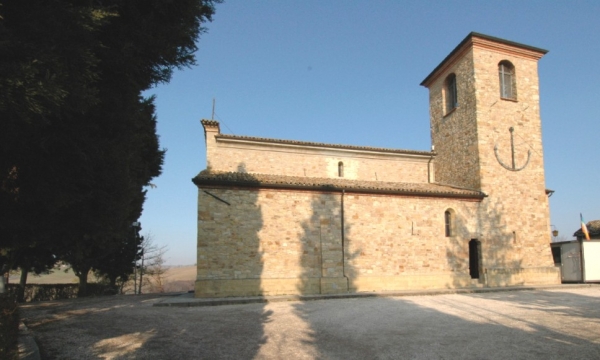HISTORY
The parish church of Contignaco, dedicated to Saint John the Baptist, is perched on a crest among the hilltops of Salsomaggiore Terme, in the province of Parma, on the opposite side of the castle of the Pallavicino family. The Romanesque monument has its origins in the 12th century, having been cited for the first time in a document of 1179. It was later mentioned in a bull of 1196, and subsequently restored in 1391 by Iohannes de Saselinis of Parma, as recorded in an epigraph on the façade. In the Middle Ages, it was a particularly important monument for being a baptismal church and having jurisdiction over several other churches, functioning almost like a small diocese. The church was majorly rebuilt between 1781 and 1789 along Baroque stylistic lines, including the construction of vaults in the nave and aisles, and the addition of plaster and cornices. But restorations beginning in 1954 eliminated the plaster and the other Baroque interventions. Thus the church was able to recuperate that austerity and sobriety typical of the Romanesque style, bringing back the original wall surfaces of precise ashlar blocks, both on the interior and exterior of the structure.
ART-HISTORICAL NOTES
The gabled façade features a portal, above which sits a niche with a 14th century Madonna and Child sculpture. A square campanile sits to the south of the church. The semi-circular apse was probably demolished and substituted at some point. The three-aisled basilica is divided into three bays by round arches on square piers with no capitals. The one exception if the pier to the left, cylindrical with a chamfered cube capital. A small chapel in the right-hand aisle possibly functioned as the baptistery, distinguished by a vault and late-Gothic frescoes from the 15th century, which have been relocated to other locations in the church.






